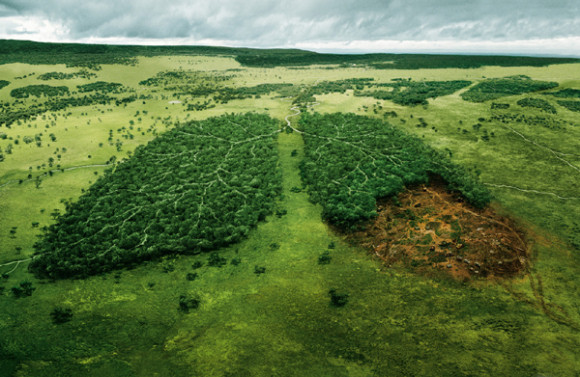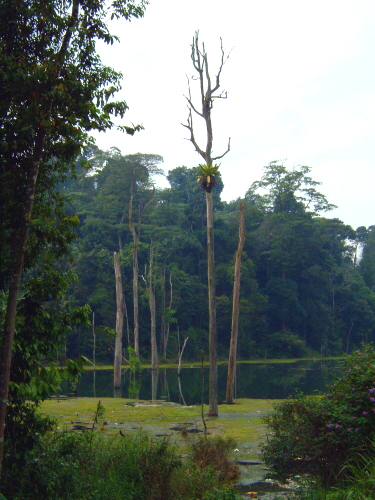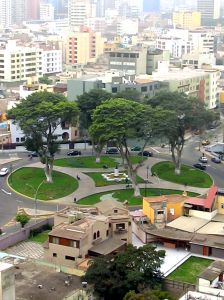A fight to defend one of the last remaining green lungs in Istanbul sparked nationwide protests in Turkey recently. Despite that, the Turkish government has yet to reconsider its plan to turn Gezi Park into a shopping centre.
The same story occurs in most cities worldwide. When land becomes limited in urban areas, forests and parks are razed to make way for condominiums, malls and offices.
Looking at the Klang Valley, are we not losing our green spaces to commercial development as well? What are the benefits of retaining such spaces, and what can be done to preserve them?

Documented benefits
One of the reasons green spaces tend to be undervalued by town planners may be because scientists have not been able to prove its connection with our well-being until recently.
A study published in the Psychological Science journal in April 2013 found that city dwellers who live near green spaces tend to be happier than those who don’t. Tracking 5,000 households over 17 years, researchers from the University of Exeter Medical School found that respondents living in greener areas reported “less mental distress and higher life satisfaction”. The positive impact is equivalent to about a third of the impact of being married and a tenth of the impact of being employed.
“These kinds of comparisons are important for policymakers when trying to decide how to invest scarce public resources, such as for park development or upkeep, and figuring out what bang they’ll get for their buck,” lead researcher Dr Mathew White said in a press release.
Another new study published in the British Journal of Sports Medicine in March 2013 confirmed that taking a stroll through a park helps to ease brain fatigue far better than walking through shopping or commercial districts.
If those studies weren’t enough, older research has discovered that children with attention deficit problems tend to focus better after walks in a park. “The researchers found that ‘a dose of nature’ worked as well or better than a dose of medication on the child’s ability to concentrate,” The New York Times reported in its health blog in 2008.
Defending green spaces

A new government under the Pakatan Rakyat (PR) in Selangor after 2008 saw the Kota Damansara forest and the Ayer Hitam forest in Puchong gazetted as permanent forest reserves in 2010. A plan to develop the Subang Ria Recreational Park – the only open space left in Subang Jaya – was also defeated in 2011.
However, the people of Selangor should not take it for granted that the PR government will always defend green spaces. In the dispute over the Kelana Jaya sports centre, the state administration chose to ignore the Petaling Jaya Local Plan Two, in which the field was classified as an open space. It has refused to direct its state subsidiary to scrap its redevelopment plan.
In our capital city, Kuala Lumpur City Hall has yet to gazette Bukit Kiara as a forest reserve. While the Petaling Jaya side of Bukit Gasing is protected, the Kuala Lumpur side of the forest has been making way for housing projects.
Bukit Gasing residents who protested against a hill slope development project over safety concerns lost their legal battle in October 2012. To add insult to injury, the Kuala Lumpur High Court on 2 May 2013 allowed the developer to seek damages from the residents.
Participatory local governance
It is heartening that there are still citizens who would speak up, join forces and campaign hard to preserve the shrinking forests and parks in the Klang Valley. However, I think citizens need to be more proactive. Get to know your local councillors, state and federal legislator. Ask them about your area’s local plan. Find out what development plans are in store that would affect your neighbourhood.
In other words, build a relationship with your local council’s officers and your elected representatives. Don’t scream at them only when you discover the playground facilities near your taman have been vandalised, or when another high-rise building is coming up in your already congested town centre.

Keep an eye out for public briefings or dialogues held by your local council on development projects that would affect your area. Attend the budget dialogues held by local governments under the PR. Ask them how much they are spending on parks and playgrounds.
Hold political parties accountable. Make sure they appoint development experts, lawyers, economists, environmental experts and NGO representatives as local councillors to provide sound advice to your local government.
For far too long, citizens have left the responsibility of town planning to local councils. What sort of development do you want for your area? How many green spaces do you think should be preserved? What other facilities does your area need?
If our citizens do not invest time and effort to organise themselves and engage with local councils, the policymakers will implement development plans according to what they think the people need and want. But by building an active, working relationship with local governments, the people can keep the politicians and civil servants on their toes. Their voices against controversial projects will also carry more weight in time. ![]()
Gan Pei Ling believes an idle citizenry in a democracy breeds authoritarianism and irresponsible governments.


K-17 says
Look no further but at our own backyard, the RRI land in Sg Buloh.
Isn’t this 2000 acres the largest green lung in the Klang Valley?
Why allow EPF to fragment it for greedy developers and sacrifice a precious heritage?
Act before it is too late.